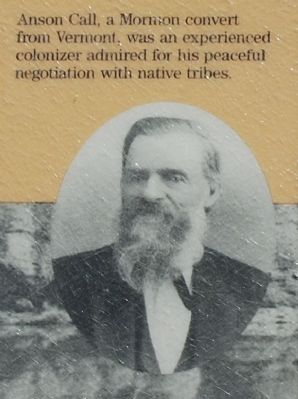 See more about this marker on this page. Inscription. About two miles in front of you, the remains of the town of Callville lie buried in silt on the bottom of Lake Mead. Originally developed as a port on the Colorado River to supply goods to Mormon settlements, Callville had long been a desolate ruin by the time Lake Mead's rising water swallowed it up.
See more about this marker on this page. Inscription. About two miles in front of you, the remains of the town of Callville lie buried in silt on the bottom of Lake Mead. Originally developed as a port on the Colorado River to supply goods to Mormon settlements, Callville had long been a desolate ruin by the time Lake Mead's rising water swallowed it up. In December of 1864, Anson Call traveled overland past this point to the north bank of the Colorado, where he selected a town site along a horseshoe bend of the river. Call built a landing and a large warehouse for cargo that was to come up the Colorado by steamboat.
Callville never really got going. Isolation, competition, tough upstream navigation, and a transcontinental railroad dogged the town's progress. A steamboat finally landed at Callville in 1866, but two years later the town was abandoned.
No comments:
Post a Comment